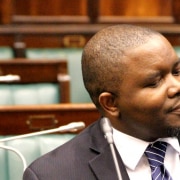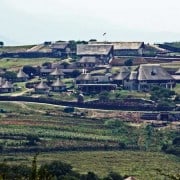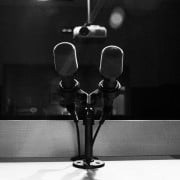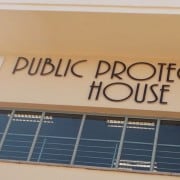|
Getting your Trinity Audio player ready...
|
Jacob Zuma’s portion of the Nkandla bill is a scant R7.8-million, says the National Treasury. The state purse-keeper submitted its report to the Constitutional Court on Monday, keeping to the deadline of 28 June. The amount is the equivalent of three years’ presidential salary.
It now lies with the Constitutional Court to approve the determined amount, or to disagree with the treasury’s assessment. On 31 March the court handed down a judgment in which it found that Zuma had failed to uphold his duties as prescribed by the Constitution in his dealings with Public Protector Thuli Madonsela and her report into the Nkandla irregularities, titled Secure in Comfort.
Madonsela found that Zuma had benefited unfairly from security upgrades to his private home, because some of the upgrades, carried out at taxpayers’ cost, were not security features. She was criticised and belittled by Zuma and the National Assembly for months, ever since he was cleared in May 2015 of having to pay a cent by the unfortunate police minister, Nathi Nhleko – until the Constitutional Court found in her favour, ruling that her findings are binding, subject only to a judicial review.
The case was brought by the EFF and DA, with Corruption Watch as amicus curae. The court had given the Treasury a period of 60 days within which to report back with an appropriate sum, which Zuma would then have to repay within 45 days, once the court had given the go-ahead.
The sum of R7.8-million is just under 88% of the cost of the non-security features as determined by a panel of experts.
Amount may not be enough
However, there is already dissatisfaction with the amount put forth by the Treasury. Speaking to 702, political analyst Prof Lesiba Teffo of Unisa said that the amount may be too low, and that this might not be the end of the saga.
“Legally we are moving towards the end of the road … but somebody must still account for those millions, because the property that I see doesn’t justify that much money to be spent on it. He still has to account to the people of South Africa [for this].”
There is a moral basis to go after the president, Teffo said, “in addition to the contradictory statements he made along the way, because he was less than honest with the nation.”
Corruption Watch’s executive director David Lewis agreed with Teffo. “I think that most people will find the amount disappointingly low, although this is not the Treasury’s fault as they operated within the limitations given to them by both the public protector’s report and by the Constitutional Court.”
It’s not only the Nkandla report, said Lewis – it’s Zuma’s wives’ cars, it’s his R4-billion airplane, his relationship with the Gupta family, so even if the figure was R80-million, it would be too low, because Zuma’s whole lifestyle suggests that he owes “a lot of money to the South African public, over and above the Nkandla report.”
This conduct has resulted in distrust of “any decision of government, even that, in this instance, of the Treasury,” said Lewis.
This was more or less the outcome he’d expected, Lewis said in an earlier interview with 702.
How did the Treasury do it?
The Times has provided a step-by-step explanation of how the Treasury arrived at this figure:
- Treasury had to first determine the reasonable costs of the non-security features.
- It had to determine the percentage of the cost that Zuma would be personally liable for.
- Two quantity surveying firms, each comprising three experts, were contracted to do the job. The firms had to work independently of each other.
- The Department of Public Works had to provide relevant electronic and hard copies of the construction and engineering drawings of the amphitheatre‚ cattle kraal‚ chicken run‚ visitors centre and swimming pool.
- Each firm visited the Nkandla residence, without having contact with each other during the process.
- A moderating panel was assigned to receive the reports by the two firms. The panel was made up of chief executive officers of the South African Institute of Civil Engineering (SAICE) and Association of South African Quantity Surveyors (ASAQS)‚ two professional engineers, and two professional quantity surveyors‚ each of whom had at least 30 years of experience.
- In its study of the reports by two firms‚ the panel concluded on a view that that the only element of the five components in question that could be considered to be of a security nature was the control centre on the ground floor of the visitor’s centre.
- The panel also concluded that the reasonable costs of the five items amounted to R8 884 364 (including VAT) as at June 2009 and R11 753 758 (including VAT) as at May 2016‚ with an accuracy of ± 10%.
- Treasury accepted the reasonable cost determination from the panel and agreed that the amount that Zuma would have to pay personally would be 87.94%. This percentage corresponded to R7 814 155 as at June 2009.







